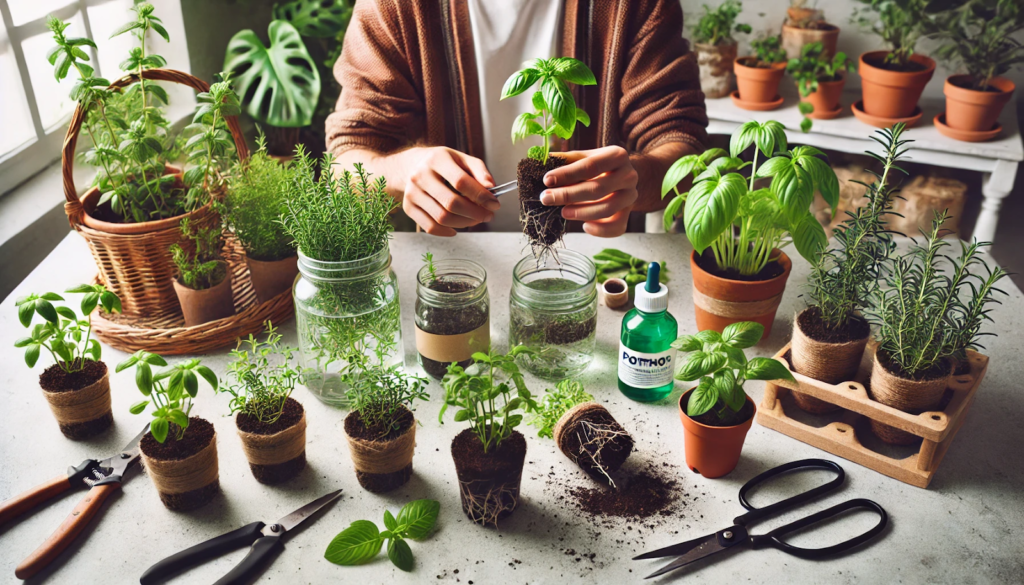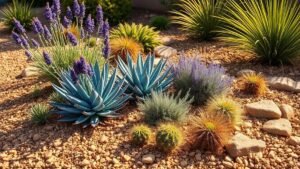Growing plants from cuttings is one of the easiest and most cost-effective ways to propagate your favorite greenery. Whether you’re working with herbs, houseplants, or shrubs, propagation by cuttings lets you clone healthy plants and multiply your garden with minimal investment.
This guide will walk you through the process of taking and rooting cuttings successfully, step by step.
1. What Are Plant Cuttings?
A cutting is a piece of a plant—usually a stem, leaf, or root—that, under the right conditions, grows into a new plant.
Types of Cuttings:
- Stem cuttings – Most common; used for herbs, houseplants, and many ornamentals
- Leaf cuttings – Great for plants like succulents and African violets
- Root cuttings – Used for certain perennials and woody plants
Each method has unique requirements, but stem cuttings are the easiest place to start.
2. Best Plants to Grow from Cuttings
Herbs:
- Basil
- Mint
- Oregano
- Rosemary
- Thyme
Houseplants:
- Pothos
- Snake Plant
- Spider Plant
- ZZ Plant
- Tradescantia
Outdoor Plants:
- Hydrangea
- Lavender
- Fuchsia
- Geranium
- Coleus
These species root quickly and are perfect for beginner propagation.
3. Tools and Supplies You’ll Need
- Clean, sharp scissors or pruning shears
- Small pots or seed trays
- Seed-starting soil or perlite
- Jars of water (for water propagation)
- Rooting hormone (optional but helpful)
- Plastic bag or humidity dome (for moisture retention)
- Spray bottle (for misting)
Sanitize tools before cutting to avoid transmitting diseases.
4. How to Take a Cutting
Steps for Stem Cuttings:
- Choose a healthy stem (4–6 inches long) just below a leaf node
- Cut the stem at a 45-degree angle using clean scissors
- Remove the bottom leaves, leaving 2–3 leaves at the top
- Dip the cut end in rooting hormone (optional)
- Place in water or soil depending on the plant
Keep multiple cuttings for better success rates.
5. Water vs. Soil Propagation
Water Propagation:
- Best for soft-stemmed plants (e.g. pothos, basil)
- Use clear jars so you can watch roots develop
- Change water every 3–5 days
- Transplant to soil when roots are 1–2 inches long
Soil Propagation:
- Ideal for woody plants or herbs
- Use a moist, well-draining mix
- Keep in a warm, bright spot out of direct sun
- Mist lightly and cover with a plastic dome for humidity
Both methods work well—choose based on plant type and preference.
6. Caring for Cuttings During Rooting
- Keep soil consistently moist but not soggy
- Maintain high humidity by covering with plastic
- Place cuttings in bright, indirect light
- Avoid fertilizing until roots are established
Rooting usually takes 1–4 weeks depending on the plant.
7. Transplanting Rooted Cuttings
Once your cuttings have developed strong roots:
- Gently remove them from water or starter soil
- Plant in individual pots with regular potting mix
- Water thoroughly and place in a shaded area for a few days
- Gradually move into brighter light or outdoor conditions
Always handle new roots carefully—they’re fragile.
8. Common Mistakes to Avoid
- Using dull scissors – crushes stems instead of cleanly cutting
- Overwatering – leads to rot and fungal issues
- Not labeling cuttings – easy to forget which is which
- Too much sunlight – scorches unrooted stems
- Neglecting sanitation – can cause disease transmission
Patience and cleanliness lead to better success.
9. Keep a Propagation Station
Set up a dedicated space for propagating plants.
Essentials:
- Tray with jars or pots
- Labeling sticks or tags
- Grow light for winter propagation
- Heat mat for warmth if needed
Having a routine setup makes the process more enjoyable and efficient.
Conclusion: Multiply Your Garden the Easy Way
Growing plants from cuttings is rewarding, educational, and sustainable. With just a few snips and a little care, you can transform one plant into many—filling your home, sharing with friends, or expanding your garden naturally.
Start with easy herbs or houseplants, and soon you’ll be propagating like a pro.






